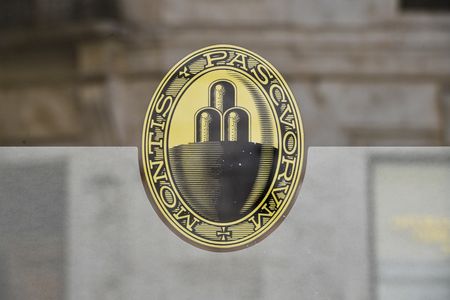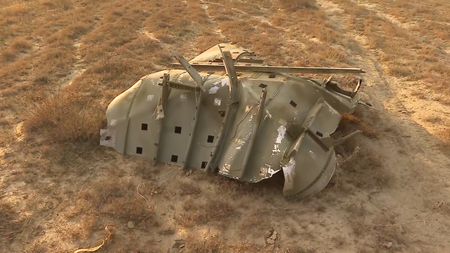BRUSSELS (Reuters) -The European Commission on Monday proposed to EU governments three options to finance Ukraine in 2026 and 2027. EU leaders are expected to discuss which one to pick in December.
Below are the options as spelled out by the Commission.
WHAT ARE UKRAINE’S NEEDS?
The International Monetary Fund and Ukrainian authorities estimate that Ukraine will need 135.7 billion euros for 2026–2027, if Russia stops its war against Kyiv by the end of 2026.
Of that total, the country will need:
2026: 71.7 billion euros, of which 51.6 billion euros are for the military and 20.1 billion euros for other needs.
2027: 64 billion euros, of which 31.8 billion euros for the military and 32.2 billion for other needs.
WHEN IS THE MONEY NEEDED?
First disbursements need to start from April 2026.
LOANS OR GRANTS?
For Ukraine’s debt to be sustainable, the EU financing must be in the form of grants or grant-like instruments.
ALL IN ONE GO OR A STEADY DRIP?
The EU financing would come in tranches over the two years and disbursement would depend on Ukraine sticking to principles of rule of law and fighting corruption.
OPTION ONE – GRANTS FROM EU GOVERNMENTS
Each EU government would make a voluntary contribution to the Commission, the size of which would be determined by the size of its economy (Gross National Income key). The Commission would aggregate contributions and make disbursements to Ukraine.
EU countries would have to provide a minimum of 45 billion euros a year, so 90 billion euros in total, assuming the war ends in 2026 and other countries help with the remaining sum.
Pros: No new joint EU debt, no new guarantees.
Cons: Immediate impact on EU governments’ budgets.
OPTION TWO – EU BORROWING ON MARKETS
The EU would borrow on financial markets and lend the money on to Ukraine on the understanding that Kyiv would only repay it once it receives war reparations from Russia.
EU governments would have to provide legally binding, unconditional, irrevocable and on-demand guarantees for the joint borrowing according to the GNI key in case the borrowing needs to be repaid without a repayment by Ukraine.
The individual government guarantees would stay in place unless they are taken over by the new EU seven-year budget that starts in 2028. The borrowed amount could be 90 billion euros.
EU governments could choose to create a Special Purpose Vehicle (SPV), with paid in and callable capital, to borrow the money. Countries from outside the EU could join the SPV because there are 42 billion euros of cash linked to Russian sovereign assets immobilised in non-EU G7 jurisdictions. The SPV could not borrow as cheaply as the EU, unless it has a significant level of overguarantees.
Pros: No risk of lawsuits from Moscow since Russian assets would not be involved.
Cons: The guarantees needed for the borrowing and interest payments would increase national debt and deficit.
OPTION THREE – REPARATIONS LOAN
The EU would provide a grant-like loan to Ukraine, based on immobilised Russian assets, which Kyiv would repay only once it receives war reparations from Russia.
To get the funds, the EU would engage in a compulsory tailor-made debt contract with central securities depositories (CSD) holding immobilised Russian assets in different EU countries at zero interest — the CSD would get zero-coupon EU bonds in exchange for the Russian cash on its accounts.
If only CSDs are involved, the amount generated in this way would be 185 billion euros. The model could also be applied to EU commercial banks holding Russian sovereign assets, which would add another 25 billion euros for a total of 210 billion euros.
EU governments would provide legally binding, unconditional, irrevocable and on-demand guarantees to the EU, based on the GNI-key, that they would repay the money, if needed.
The guarantees would remain in place unless risks are taken over by the EU budget. EU governments would also share the risk, costs and financial consequences of lawsuits lost to Russia.
Pros: Guarantees issued by EU governments would be contingent liabilities, not counting towards debt. No impact on national budgets, large amounts generated for Ukraine.
Cons: Risk of lawsuits lost to Russia and their financial consequences.
COMBINATIONS OF OPTIONS
The Commission said the three options were not mutually exclusive and could be combined or sequenced, provided they meet key criteria like the necessary speed, grant-like character, and necessary scale to sustain Ukraine’s war effort and to maintain the functioning of the Ukrainian state in the coming years.
(Reporting by Jan Strupczewski, editing by Ed Osmond)










